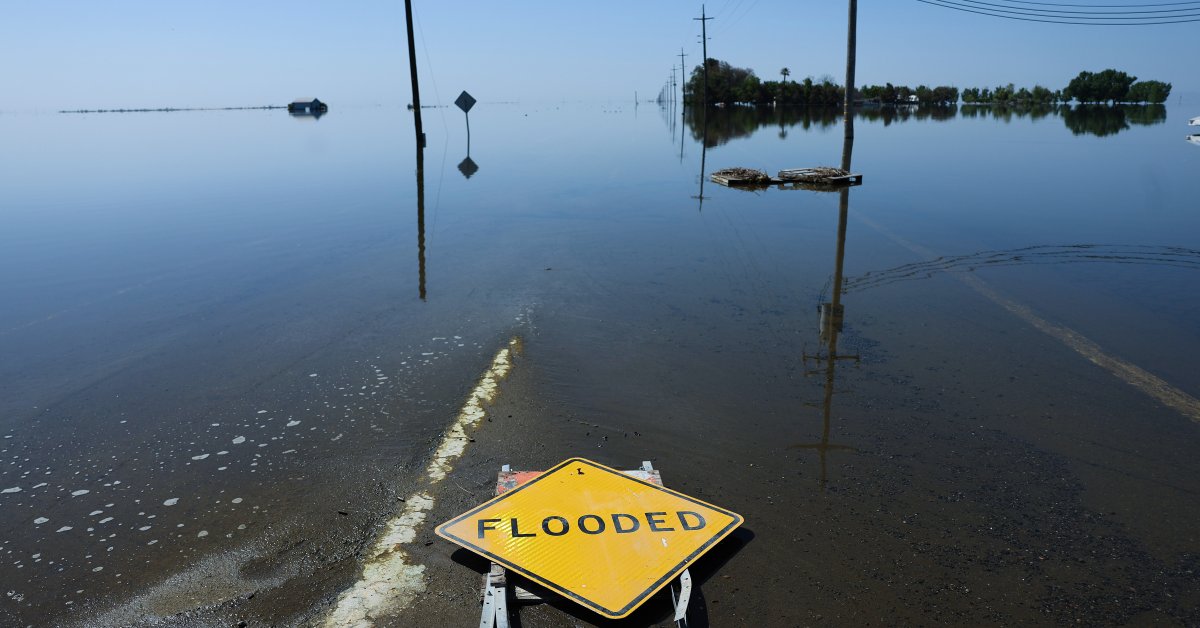Why Are 100-Year Weather Events Occurring More Frequently Than Expected?

Welcome to your ultimate source for breaking news, trending updates, and in-depth stories from around the world. Whether it's politics, technology, entertainment, sports, or lifestyle, we bring you real-time updates that keep you informed and ahead of the curve.
Our team works tirelessly to ensure you never miss a moment. From the latest developments in global events to the most talked-about topics on social media, our news platform is designed to deliver accurate and timely information, all in one place.
Stay in the know and join thousands of readers who trust us for reliable, up-to-date content. Explore our expertly curated articles and dive deeper into the stories that matter to you. Visit Best Website now and be part of the conversation. Don't miss out on the headlines that shape our world!
Table of Contents
Why Are 100-Year Weather Events Occurring More Frequently Than Expected?
The world is witnessing a stark increase in the frequency and intensity of extreme weather events. What was once considered a "100-year flood" or a "once-in-a-century heatwave" is now becoming a disturbingly regular occurrence. But why? The answer, increasingly supported by scientific consensus, points to the undeniable impact of climate change.
The Shifting Baseline: Redefining "100-Year Events"
The term "100-year event" traditionally referred to an event with a 1% probability of occurring in any given year. This probability was calculated based on historical weather data, which, crucially, predates the significant acceleration of global warming. As the climate changes, these historical baselines become less reliable predictors of future events. The increased frequency of extreme weather undermines the very foundation of these probabilistic assessments.
Climate Change: The Undeniable Driver
The overwhelming scientific consensus attributes the increased frequency of extreme weather events to anthropogenic (human-caused) climate change. The burning of fossil fuels, deforestation, and industrial processes release greenhouse gases into the atmosphere, trapping heat and causing a global temperature rise. This warming trend doesn't just mean slightly hotter summers; it fundamentally alters weather patterns.
Mechanisms of Increased Frequency:
-
Increased Atmospheric Moisture: A warmer atmosphere holds significantly more moisture. This leads to heavier rainfall and increased potential for devastating floods, like those seen recently in [insert recent example of devastating floods with link to reputable news source].
-
Intensified Heat Waves: Higher temperatures exacerbate heat waves, making them more frequent, longer-lasting, and more dangerous. The devastating heat waves across [insert recent example of heatwave location with link to reputable news source] highlight this alarming trend.
-
More Powerful Storms: Warmer ocean temperatures fuel more powerful hurricanes and typhoons. The increased intensity and destructive potential of these storms are evident in the growing number of Category 4 and 5 hurricanes. [Link to reputable source on hurricane intensity].
-
Sea Level Rise: Melting glaciers and thermal expansion of seawater contribute to rising sea levels, increasing the vulnerability of coastal communities to storm surges and flooding. [Link to reputable source on sea level rise].
Beyond the Statistics: The Human Cost
The increased frequency of 100-year events translates into tangible human consequences:
- Loss of life: Extreme weather events claim lives and displace communities.
- Economic devastation: The cost of repairing infrastructure and recovering from these events is astronomical, placing a significant strain on economies worldwide.
- Food insecurity: Extreme weather patterns can severely impact crop yields, leading to food shortages and price increases.
- Mass migration: Climate change-induced disasters force people to leave their homes, leading to mass migration and social instability.
Looking Ahead: Mitigation and Adaptation
Addressing this challenge requires a two-pronged approach:
-
Mitigation: Reducing greenhouse gas emissions through transitioning to renewable energy sources, improving energy efficiency, and implementing sustainable land management practices is crucial to slowing the pace of climate change.
-
Adaptation: Investing in resilient infrastructure, developing early warning systems, and implementing effective disaster management strategies are essential to minimizing the impacts of extreme weather events.
The increased frequency of extreme weather events is not just a statistical anomaly; it's a stark warning. Ignoring the scientific evidence and failing to act decisively will only exacerbate the problem, leading to more frequent and devastating consequences. The time for action is now. We need global cooperation and immediate action to mitigate climate change and adapt to the new reality of a more volatile climate.

Thank you for visiting our website, your trusted source for the latest updates and in-depth coverage on Why Are 100-Year Weather Events Occurring More Frequently Than Expected?. We're committed to keeping you informed with timely and accurate information to meet your curiosity and needs.
If you have any questions, suggestions, or feedback, we'd love to hear from you. Your insights are valuable to us and help us improve to serve you better. Feel free to reach out through our contact page.
Don't forget to bookmark our website and check back regularly for the latest headlines and trending topics. See you next time, and thank you for being part of our growing community!
Featured Posts
-
 Honey Boo Boo Vs Patti Lupone A Public Feud Erupts
May 31, 2025
Honey Boo Boo Vs Patti Lupone A Public Feud Erupts
May 31, 2025 -
 Phenomenal True Story Series On Netflix Elicits Intense Emotional Response
May 31, 2025
Phenomenal True Story Series On Netflix Elicits Intense Emotional Response
May 31, 2025 -
 Foreign Officials Face Us Visa Restrictions Over Social Media Censorship Concerns
May 31, 2025
Foreign Officials Face Us Visa Restrictions Over Social Media Censorship Concerns
May 31, 2025 -
 Trumps Autopen Scandal A Bigger Controversy Than The 2020 Election
May 31, 2025
Trumps Autopen Scandal A Bigger Controversy Than The 2020 Election
May 31, 2025 -
 Global Soccer Fans Find A Home In The U S Cities Prepare For The Rush
May 31, 2025
Global Soccer Fans Find A Home In The U S Cities Prepare For The Rush
May 31, 2025
